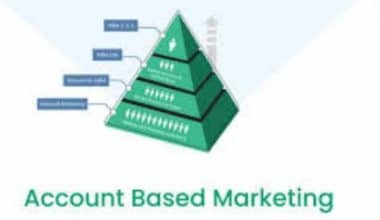Conversions are critical to your bottom line in the world of digital marketing. This is where CRO marketing can help you improve your conversions.
According to reports, the average return on investment (ROI) from CRO marketing efforts is about 223%, and more than half of businesses believe that CRO marketing is critical to their overall digital marketing strategy.
Of course, conversions are never guaranteed, but with the right optimization efforts, there is a better chance of generating quality leads and potential conversions.
This can lead to more long-term and sustainable growth for businesses.
So, let’s look at what CRO marketing is, why it’s important, how it differs from SEO, and how you can create your own CRO marketing strategy.
What is a Conversion Rate?
The percentage of visitors who complete a desired action, such as filling out a web form, signing up for a service, or purchasing a product, is referred to as the conversion rate.
A high conversion rate indicates that your website is well-designed, effectively formatted, and appealing to your target audience. A low conversion rate could be caused by a number of factors related to website performance or design.
Slow load times, a broken form, or copy that fails to convey the value of the offer are all common causes of a low conversion rate.
What Constitutes a Good Conversion Rate?
A “good” conversion rate is determined by factors such as your industry, niche, goals, traffic channel, and audience demographics, among others.
For example, the global average conversion rate of e-commerce sites in the third quarter of 2020 was 2.17%, down from 2.37% the previous year. However, the e-commerce conversion rate in the United States was higher, at 2.57%.
The average varies not only by year and country but also by niche. The average conversion rate of e-commerce sites in the food and beverage sector, for example, is 5.5%, while the average in the hair care sector is 3.5%.
If your conversion rate is lower than you’d like — perhaps it’s lower than the industry average, lower than your top competitors, or simply underperforming against your own goals — it’s time to optimize.
Conversions can occur on your website’s homepage, pricing page, blog, landing pages, and elsewhere. You should optimize each location to maximize your chances of converting website visitors into paying customers.
Before we get into the advantages of CRO, let’s go over how to calculate your site’s conversion rate.
This will give you a better idea of how much time and resources to devote to a CRO strategy.
Conversion Rate Calculation
To calculate the conversion rate, divide the number of conversions by the number of visitors and multiply the result by 100.
Calculating your conversion rate is simple if you know how to define a conversion. Simply enter two values and multiply by 100.
Assume you define a conversion as a newsletter opt-in and have an opt-in form on every page of your website.
In that case, you would multiply the total number of newsletter form submissions by the total number of website visitors by 100. So, if you received 500 submissions and 20,000 visitors in the previous quarter, your conversion rate would be 2.5%.
This process can be repeated for each conversion opportunity on your site. Just make sure to only count visitors to the pages where the offer is listed.
To calculate the conversion rate of your ebook offer, for example, divide the total number of downloads by the number of people who visited web pages where the ebook offer is listed.
You can also calculate your website’s overall conversion rate by dividing the total number of conversions for each conversion opportunity on your site by the total number of visitors.
What Is CRO Marketing?
CRO marketing, also known as Conversion Rate Optimization marketing, is the systematic process of increasing the percentage of visitors to your company’s website who take a desired action — such as subscribing to a mailing list, completing a personal information form, registering for a seminar, and so on.
With an estimated ROI of 223% from CRO tools and 59% of company respondents stating that CRO is critical to their overall marketing strategy, the topic is undoubtedly one worth investigating.
In short, optimization is important because it increases the effectiveness of your marketing efforts. So, now that we’ve discussed the principle, let’s put it to use! While the implementation of CRO within a marketing plan will differ depending on your company’s specific goals and needs, there is a general framework for this multi-step process.
Why is CRO Important?
If your company operates entirely or partially online, CRO marketing efforts are critical to its overall success.
Because it capitalizes on your existing traffic rather than paying for more, CRO marketing has the potential to bring numerous benefits without costing a fortune.
Here are a few examples of what CRO marketing can do for your company.
#1. Increase Your Revenue
Conversions, whether they are personal data registrations or content downloads, help to improve engagement. This all adds up to more revenue for your bottom line.
#2. Increase the value you provide to current customers.
The user experience is improved by redesigning the entire layout of your website or by taking a new approach to your marketing efforts.
Taking these steps to improve the user experience for current visitors is far more profitable than spending money to attract new web visitors.
#3. Improve the User Experience
The higher your conversion rate, the more likely you will have satisfied customers who are willing to spend money with your brand.
Simple changes to your website can often help improve the user experience and increase conversions.
More customers will be captured and potentially retained when visitors can easily navigate your website and find the information they’re looking for.
A more appealing layout, a more readable font, non-contrasting colors, or a larger CTA button are some examples.
When you have happy customers, you have loyal customers, so take the necessary steps to ensure that their experience on your website is the best it can be.
#4. Increase Brand Affinity and Awareness
The more customers interact with your website and brand as a whole, the more they will recognize it even when they aren’t directly interacting with it, and the stronger the emotional connection between your brand and your customers.
As a result, when customers are considering a purchase related to your brand, the chances are that they will consider doing business with your brand.
The same is true for spreading the word about your brand to family, friends, colleagues, and so on.
Finally, CRO marketing is important because it is intended to increase the effectiveness of your marketing efforts.
What Is the Difference Between CRO and SEO in Digital Marketing?
CRO and SEO are frequently confused by some people. Some even believe that the two work in opposition to one another.
The truth is that when it comes to CRO vs SEO in digital marketing, both play critical roles in a well-rounded marketing strategy. They can, in fact, complement one another.
CRO marketing entails making a number of changes to SEO-related strategies, such as on-page optimization.
These enhancements will help to increase engagement, visitor time on your website, conversions, and revenue.
When you make changes to your website design (headings, font, content, keywords, etc.), you are not only creating a more direct path for your customers (one of the goals of CRO marketing), but you are also implementing SEO-friendly tactics that will directly and positively impact your search engine rankings.
Improved site page loading speed, user-friendly and skimmable pages, regular content and design updates, and clear and relevant headings are some examples of how the two work together for your website.
What Are CRO Goals and How Do You Set Them?
Optimization of conversion rates does not occur in a vacuum. You need defined goals to determine whether or not your experimentation program is successful.
Before you can set up your CRO goals, you must first have well-defined business goals with which the conversion experts will align the CRO program for success.
Failure to do so will only lead to the CRO marketing team working on experiments that have no direct impact on the company’s quarterly goals. This can lead to frustration among conversion experts and business owners, which we do not want.
Moving on, there are two types of goals in CRO marketing. We have a macro goal (the primary conversion that every business cares about), as well as micro-goals (they seem like distractions and unnecessary). Nonetheless, every mature experimenter understands that in order to achieve your macro-goals, you must consistently hit your micro-goals.
For an eCommerce website, the primary conversion is a purchase; that’s what they want, and that’s what they’re looking for.
A micro conversion that appears insignificant but is a significant step toward this macro goal is to recover more abandoned carts. This will be accomplished by setting up an abandoned cart flow in their email service provider, which will allow them to reach out to users who paused their purchase process and recover some sales.
The win-back flow to get previous subscribers/purchasers to buy again is another example of a micro goal that leads to an increase in purchases for this eCommerce website. The more previous buyers who buy again, the more orders are placed, which has a direct impact on the macro purchase goal.
The distinction between micro and macro goals, as well as how they interact, should be clear by now, right?
You might want to achieve the following macro CRO marketing objectives:
- Sales have increased.
- To expand your email list.
- To increase conversions on your top-selling products.
- Registering for an event.
- An increase in the number of downloads of an application, guide, lead magnet, and so on.
How to Create a CRO Marketing Plan
#1. Define the term “conversion.”
As we’ve seen, conversions can take many different forms. You must first decide which KPI you will measure in order to measure your CRO. This will vary depending on the campaign, but it is critical that you define your goal. As is always the case with data, without the appropriate metric, the data is meaningless.
#2. Create a customer journey map.
It is critical to understand how your customers found your brand’s website and how they interact with it after that. It is impossible to determine which touchpoints can be improved to drive conversions without this knowledge. To determine which customers are most likely to convert, you should first collect and analyze data on them. This information may include:
- Demographics (age, gender, income bracket)
- Psychographics (attitudes, aspirations)
- Geographics (location, locales)
- Interests
- Occupations
- Behaviors
- Priorities
Based on this data, AI can help you divide your customers into different segments, and then create sub-segments within segments for a more granular customer view. Then, based on their likelihood to convert, you can rank these segments to ensure that you only target the most valuable customers with timely and relevant marketing material that they will find compelling.
#3. Examine your current conversion procedure.
It’s time to ask yourself why your site visitors aren’t converting right now. It could be because of:
- Fonts that are difficult to read
- Web pages that take a long time to load
- Customer testimonials that are unconvincing (or do not exist)
- Images that do not load or are incorrectly formatted
- A CTA that is neither compelling nor easy to overlook
- Ads that are too intrusive/too many pop-ups
- Poor web page design
- A mismatch between the page headlines and the content
To determine which pages have the greatest potential for increased conversions, look for those with the lowest traffic-to-conversion rate ratio (i.e. those with the highest traffic, but the lowest conversion rate).
#4. Testing, testing, testing
Once you’ve identified the problem, you can try out different solutions, such as three new fonts to see which one is the most readable.
There are two types of testing: A/B and multivariate (MVT).
- A/B testing compares two versions of the page under consideration while only changing one variable (for example, the font). This allows you to pinpoint which elements increase or decrease conversions.
- MVT allows you to test multiple variables for different versions of the same page at the same time. It’s similar to running multiple A/B tests at the same time.
Before running tests, examine each element on the page to see how it can be improved. For example, full-page pop-ups may increase conversions, but a less intrusive CTA may be preferable. You should also make sure that your content is relevant to the context of the page in order to ensure clarity of messaging and minimize potential confusion.
#5. Examine
The big question is, did you get it right? Can you demonstrate conclusively that anything you changed increased conversions? When analyzing your results, keep your original goals and KPIs in mind.
Do not be disheartened if any – or even all – of your tests failed. Not every test will be a success, and a failed test will often teach you more than a successful one. Take in what you’ve learned and move on to the next step.
#6. Re-test and revise
This final step is a continuous process of improvement. It could be as simple as tweaking your edits or as involved as a complete re-evaluation of your KPIs, resetting the company goals, and conducting more customer research. Whatever the case, as long as you are constantly learning, you are on the right track to increasing your CRO.
When Is the Best Time for a Company to Begin CRO Marketing?
- The best time for a brand to begin CRO marketing is when they want to better understand their customers and improve their user experience.
- The first step is to ensure that you have quarterly business goals with which to align the CRO goals.
- Investigate Google Analytics to learn about user behavior on specific pages of your website/application.
- Using a tool like Figpii, gather qualitative insight.
- Based on the quantitative and qualitative data, prioritize your observations.
- Make a hypothesis and put it to the test against a control.
Conclusion
CRO marketing is a strategy for ensuring that you are working smarter rather than harder.
Don’t go after new customers when you have plenty of existing ones who just need a little nudge to convert. Concentrate on optimizing your website so that it can best serve your current customers.
Related Articles
- DIGITAL MARKETING: Definition, Types and, Strategies
- CONVERSION FUNNEL: Strategies For Optimization Of The Sales Funnels
- LEAD CONVERSION: Examples and Rates
- DIGITAL MARKETING CAMPAIGN: Examples & Templates To Scale Any Business
- Guide To Effective eCommerce Marketing Strategy: All You Need!






